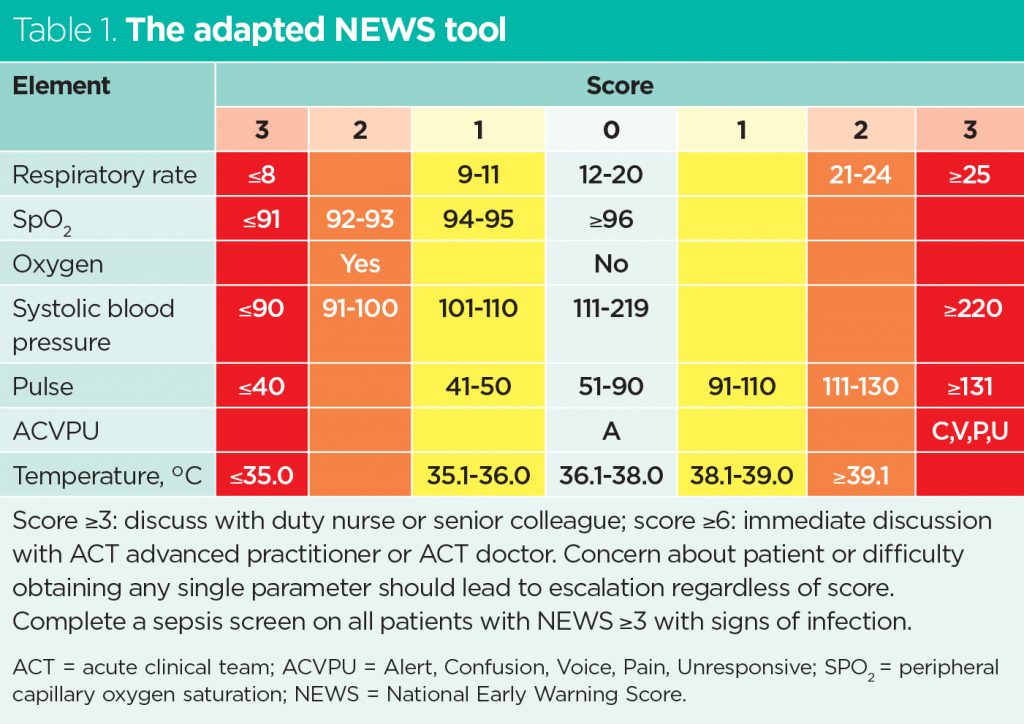The NEWS score, or the National Early Warning Score, is a tool used by healthcare professionals to quickly determine the degree of illness of a patient. While it is primarily used in the United Kingdom the coloured observation charts used in Australian hospitals are a similar concept.
The NEWS score helps in the early detection of clinical deterioration and is based on the measurement of six physiological parameters. Each parameter is given a score, and the total NEWS score is used to guide clinical response.
The six parameters measured in the NEWS score are:
- Respiration rate
- Oxygen saturation
- Temperature
- Blood pressure (systolic)
- Pulse rate
- Level of consciousness (AVPU)
NB: AVPU = Alert, responds to Voice, responds to Pain, Unresponsive.
Each of these parameters is scored on a scale, with higher scores indicating greater deviation from normal. The sum of these scores gives the total NEWS score. Based on the total score, patients can be classified into low, medium, or high risk of clinical deterioration, which then guides the urgency of the response needed, such as increased observation, additional investigations, or escalation of care.
The NEWS score is widely used in hospitals and other healthcare settings, as it is a standardized and effective method for early recognition of patients who are at risk of worsening health or those who need urgent medical attention.

